- Home
- Michael McBride
Vector Borne
Vector Borne Read online
VECTOR BORNE
A Thriller
Michael McBride
Vector Borne copyright © 2011 by Michael McBride
Cover artwork copyright © 2011 by Pichugin Dmitry
Excerpt from Burial Ground © 2011 by Michael McBride
Excerpt from Bloodletting copyright © 2009 by Michael McBride
Excerpt from Innocents Lost copyright © 2010 by Michael McBride
Excerpt from Predatory Instinct copyright © 2011 by Michael McBride
All Rights Reserved.
This book is a work of fiction. Names, characters, places and incidents are either products of the author’s imagination or used fictitiously. Any resemblance to actual events, locales, or persons, living or dead, is entirely coincidental. All rights reserved. No part of this publication may be reproduced or transmitted in any form or by any means, electronic or mechanical, without permission in writing from Michael McBride.
For more information about the author, please visit his website: www.michaelmcbride.net
Also by Michael McBride
NOVELS
Bloodletting
Burial Ground
Innocents Lost
Predatory Instinct
Vector Borne
NOVELLAS
Blindspot
Brood XIX
Remains (from The Mad & The Macabre, with Jeff Strand)
Xibalba
ZERØ
TABLE OF CONTENTS
VECTOR BORNE
Bonus Material
Excerpt from BURIAL GROUND
Excerpt from BLOODLETTING
Excerpt from INNOCENTS LOST
Excerpt from PREDATORY INSTINCT
For Blake…This, and the World
Special Thanks to Roy and Liz at Bad Moon Books, Jeff Strand, Gene O’Neill, Bill Rasmussen, Brian Keene, my family, and all of my loyal readers, without whom none of this would be possible.
VECTOR BORNE
The reason why the universe is eternal is that it does not live for itself; it gives life to others as it transforms.
— Lao Tzu
All gods are homemade, and it is we who pull their strings, and so, give them the power to pull ours.
— Aldous Huxley
Life is simply the reification of the process of living.
— Ernst Mayr
One
Pueblo Bonito
Chaco Canyon, New Mexico
June 17th
7:36 p.m. MDT
Twelve Years Ago
Dr. Graham Bradley waited for the rooster tail of dust that had followed them for the last twenty miles to pass over the forest-green Cherokee before he finally opened the door and stepped down onto the sun-baked earth. His chief of security, Roland Pike, remained rigid behind the wheel, staring fixedly through the dirty windshield. The setting sun bled the sandstone escarpments crimson and cast long shadows from the sparse pockets of sage and creosote that spotted the sandy valley. A faint breeze ruffled Bradley’s ebon hair and returned the dust, forcing him to shield his azure eyes. His custom-tailored Caraceni slacks and calfskin shoes were already gray with accumulation. At least he’d had enough foresight to shed his jacket in the car, just not enough to have packed a change of clothes in his hurry to reach the site. When the call came from Dr. Brendan Reaves eight hours ago, Bradley had been in the middle of a board meeting. The anthropologist had refused to divulge the nature of his discovery over the phone and had insisted that Bradley needed to see what he had found in person. Considering the scope of Reaves’s research, Bradley couldn’t imagine why he would be summoned in such a fashion, which only served to heighten his curiosity. The corporate jet had been fueled and waiting at Sea-Tac when he arrived. Four hours in the air and three more wending through the New Mexico desert in the rental Jeep, and here he was, parched and irritated, and tingling with anticipation.
“This had better be good,” he said, and struck off toward the cluster of khaki tents at the edge of the Pueblo Bonito ruins.
The rubble formed a D-shape, straight in front and rounded where it abutted the sheer cliff. Walls composed of stacked layers of flat rocks climbed three stories up the sandstone face to where petroglyphs had been carved by long-dead hands nearly a thousand years prior. Where once more than six hundred rooms and thirty-nine ceremonial kivas had surrounded a broad central courtyard, now only the framework remained. Some walls still stood thirty feet high, while others had crumbled to the ground. A large portion was buried under tons of sandstone where “Threatening Rock” had broken away from the embankment.
For nearly two hundred years, this had been the capital of the thriving Anasazi culture and could have housed as many as five thousand people. Until, abruptly, they abandoned the entire canyon and embarked upon a northwestward migration that would prove to be the end of this once flourishing society.
And no one knew why.
A ring of halogen lights blossomed to life just beyond the tents, turning half a dozen men and women to silhouettes. One of them raised an arm to hail him and broke away from the group. Dr. Brendan Reaves, Regent’s Professor of Cultural and Evolutionary Anthropology at Washington State University, strode directly toward him. He wore a dusty ball cap over his unkempt, sun-bleached hair. The bill hid his face in shadows. He extended a dirty hand, then thought better of it and swiped it on his filthy shorts. Instead, he tipped up his chin and offered a beaming smile, which made his sharp hazel eyes positively sparkle. He barely looked out of his teens.
“Thank you for getting down here so quickly,” Reaves said. “I honestly didn’t think you’d be willing to make the trip in person.”
Bradley gave his best boardroom smile to hide his annoyance. GeNext Biosystems was his baby and he was intimately involved on every level from research and development through marketing and distribution. He wasn’t the kind of COO who pandered to shareholders or spent his days swilling martinis on tropical shores. His vision was of a forward-thinking, revolutionary company that remained on the cutting edge of biotechnology through a non-traditional approach to research all over the globe, which meant that even he needed to roll up his sleeves from time to time.
“So, Dr. Reaves. Right to business. What could possibly be important enough to drag me across the country on a moment’s notice?”
“You wouldn’t believe me if I told you.” Reaves turned and guided Bradley toward an old pickup painted tan by the desert. “Like I said, you have to see it with your own eyes.”
Pike eased out of the Cherokee and stood at attention, but Bradley dismissed him with a subtle wave. He climbed up into the passenger seat of the professor’s truck and kicked aside a pile of garbage to make room for his feet. The truck reeked of body odor and dust, and shook when Reaves started the engine.
“Where are we going?” Bradley asked.
He watched the ill-defined dirt road in the bouncing headlights.
“Not far. Just across the wash to Casa Rinconada. It’s the largest, and only freestanding kiva in the Pueblo Bonito complex.”
“You found more remains?”
“You could say that.”
Reaves glanced over and gave a cryptic smile.
Bradley was in no mood for games. He was tired and famished, and had reached the end of his patience. Reaves must have recognized as much from his expression and started talking to fill the tense silence.
“Okay. Let me set the stage. In case you don’t remember, I’m an evolutionary anthropologist. I study the changes—both cultural and physiological—in a society over time. My primary focus is the tribes of the American Southwest, specifically the Anasazi, who inhabited this amazing primitive mecca here in Chaco Canyon from about 800 to 1150 C.E.. We’re talking about more than four hundred separate villages clustered
around a dozen or so major pueblos like Bonito back there, all within a twenty-five thousand square-mile territory, the majority between these very canyon walls. They mastered agriculture, even in this hostile terrain, and set up a system of commerce that was beyond advanced for the time. And then, one day, they just up and abandon this community that took hundreds of years to build, by hand, stone by stone.”
The tires grumbled over a bridge that shuddered under the truck’s weight. The creek bed below them didn’t appear as though it had ever held water. Ahead, a low mesa crowned by a tall stone ring resolved from the cliffs behind it.
“Next thing we know,” Reaves said, “the Anasazi reappear in the Four Corners area, only their entire architectural style has changed. Instead of building at the bottom of valleys like this one, they’re erecting fortresses hundreds of feet up on the cliffs. We’re talking about the kinds of places that someone can only enter if a ladder is lowered down from the village or if they can scale the sandstone like Spider-Man. Places like Mesa Verde in Colorado and the White House in Arizona. We speculated that the mass exodus was caused by a prolonged period of drought in the middle of the twelfth century, which killed all of their crops and drove the wild game from the area, but that didn’t explain the necessity for the fortified villages carved into niches that only birds could reach. It was almost as though they feared something, as though they were preparing to defend themselves against some kind of invading force.”
“I know all of this, Dr. Reaves. I’m the one underwriting your research. Tell me how all of this pertains to the project I’m funding.”
The plateau rose above them to their right as the road wound around it. From their vantage point, the circular walls of the kiva appeared remarkably well preserved.
“Right. We know that the Anasazi had an absurdly high incidence of anemia. Nearly forty percent of the remains exhumed here in Chaco exhibit porotic hyperostosis, which is a destructive pathological condition caused by iron-deficiency anemia that erodes the bones of the skull and orbits, and the ends of long bones. We assume that this was caused by a shift in diet over time as the Anasazi came to rely almost exclusively on plants and grains rather than the increasingly rare native game animals. They essentially cut out the iron that the human body needs to function, which it extracts from meat. That’s why it made reasonable sense when we found evidence of cannibalism. The body always knows what it needs to survive, and instinctively determines how to get it. It’s the same reason that pregnant women have cravings. Their bodies are telling them exactly what they need, both for themselves and their unborn fetuses, from fundamental nutrition to vitamins and trace minerals.”
“What GeNext is paying you for, Dr. Reaves, is to determine if the Anasazi had a genetic predilection toward anemia or if it was truly dietary. We need detailed physical assays of the structural and physiological damage in order to understand how to counteract it. And considering the prevalence of anemia diminished significantly within this same population over the next two hundred years as it migrated away from this canyon and into Colorado, we need to identify the mechanism by which it decreased, be it genetic or environmental. Nearly three percent of the population of the United States has converted to vegetarianism, which opens a huge market for targeted dietary supplements. Not to mention the intrinsic value of this information as it pertains to cultivating artificial plasma and blood.”
Reaves stared straight through the windshield as they rounded the mesa into a makeshift dirt lot wedged between Casa Rinconada and the canyon wall.
“While we appreciate and respect your expertise in matters anthropological, and would be thrilled if our shared venture afforded you the opportunity to advance your own theories in regard to the demise of the Anasazi, it is of secondary concern to our vested interest in your anemia research. GeNext is a biotechnology firm after all.”
Reaves killed the engine, which died with a clunk that rattled the entire frame. He turned to face Bradley and offered a sly smirk.
“Prepare to forget all about that.”
Reaves clambered out of the pickup, grabbed his backpack from behind his seat, and slammed the door.
Bradley climbed out and followed the professor up a steep dirt trail toward the ruins. It struck him as odd that this one sacred kiva would be built all the way across the canyon when there were nearly forty within the fortification walls. They scaled a crumbling mound of stones and dropped down to the level ground on the other side.
Reaves removed a long black Maglite from his backpack. He clicked it on and slung his pack over his shoulders. The beam illuminated a T-shaped opening in the tall circular wall, which framed a staircase that descended into the kiva. It reminded Bradley of a miniature coliseum with the rings of stone bleachers that encircled the main ceremonial stage. Three rectangles of flat rocks had been stacked a foot high to either side and toward the rear of the weed-riddled earth like primitive planting boxes roughly the size of graves. A mound of dirt and sandstone chunks lorded over the one directly ahead of them. The flashlight stained the pall of dust seeping from the hole.
“We found the first stair about three feet down.” Reaves nodded toward the pit and shined his light onto a stone staircase that vanished into the darkness. He hopped down into the hole and spotlighted the narrow channel. Bradley covered his mouth and nose with his handkerchief to keep from breathing the dust and followed Reaves underground. “It took nearly another month to excavate the remainder of the staircase and remove the stones they had used to seal off this chamber.”
Reaves led him into what appeared to be a natural cave. The walls and ceiling were rounded and scarred by dozens of petroglyphs, all of which featured massive centipedes with enormous pincers attacking stick-figure representations of men and animals alike.
“The Anasazi considered depictions of the centipede to be taboo,” Reaves said. “They believed it to be a powerful symbol of the transition between the world of the living and the land of the dead. The mere act of drawing it on these walls would have been considered sacrilegious.”
Bradley stared at the violent images for a moment before pressing on. Cobwebs swayed overhead and hung to either side where they’d been severed. Potsherds littered the floor amid a scattering of grains and gravel. Reaves stepped to his right and directed the beam at a heap of bones at his feet. They were disarticulated, shattered, and scattered in no discernible order.
“They’re human,” Bradley said.
“This wasn’t a burial,” Reaves said. “This was a willful desecration.”
“Who would have done something like this?”
“They did it themselves. We believe it was part of a ritual designed to trap the evil spirits down here when they sealed the kiva.”
Bradley knelt and inspected the bones. There was no residual blood or tissue, and the marrow had been scraped out. He couldn’t fathom the correlation to their project.
“That’s not what I brought you here to see.” Reaves pointed the beam at the back wall, where a jumble of rocks marked a shadowed orifice. He turned the Maglite around and offered it to Bradley. “I’ll let you do the honors.”
Bradley took the heavy flashlight and started toward the opening. He had to scale the fallen stones and duck his head to enter. Fractured segments of bone guided him deeper into the tunnel, which constricted around him, forcing him to stoop.
“We found the rock barricade exactly like you saw it,” Reaves said from behind him, his voice made hollow by the acoustics. “Not neatly unstacked, but toppled. We suspect it was knocked down from this side, by something that desperately wanted to get to the meat inside the main chamber.”
“They buried live animals down here?”
“Just keep going,” Reaves said.
Bones cracked under Bradley’s tread and threw uneven shadows across the stone floor. He ran his fingertips along the wall, which had distinct ridges as though carved by sharp, thin implements. The leading edge of the beam diffused into a larger cave ahead of him.
The faintest hint of the orange sunset slanted through gaps in the low ceiling. It appeared as though a rockslide had sealed a natural entrance. Motes of dust sparkled all around him.
The ground was covered with piles of bones. Entire ribcages. Cracked skulls. Shattered pelvises and femora. Both human and animal. The mounds were tangled with hair and fur. It looked like a bear’s den.
Time had leeched the stench of fresh kill, leaving the musty, mildewed smell of a crypt.
“At the back of the chamber,” Reaves whispered. “On the other side of the remains.”
Bradley had to remove the handkerchief from his face to balance on the bones. The flashlight beam swept across the desiccated figures propped against the cavern wall, casting vaguely hominid shadows onto the sandstone.
“They sealed them in here when they abandoned the pueblo,” Reaves said softly, almost reverentially. “And shortly thereafter started building high up on the sheer cliffs to the northwest.”
“There are more than enough bones here to assemble fifty skeletons,” Bradley said.
He crouched in front of the only two intact carcasses in the chamber. They were gaunt, their flesh mummified, parchment skin stretched across knobby bones, cloaked in shadows. He raised the flashlight toward their faces—

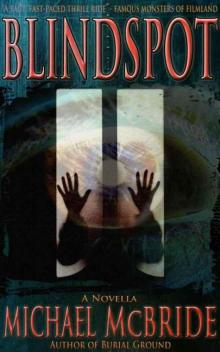 Blindspot
Blindspot Blizzard of Souls
Blizzard of Souls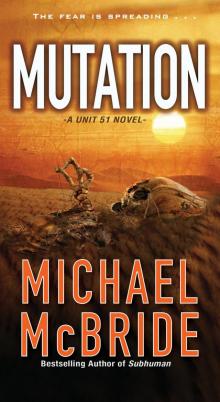 Mutation
Mutation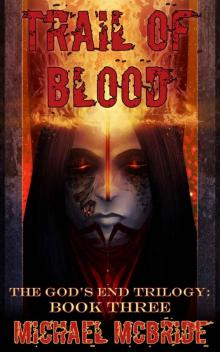 Trail of Blood
Trail of Blood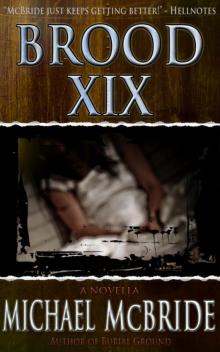 Brood XIX
Brood XIX The Fall
The Fall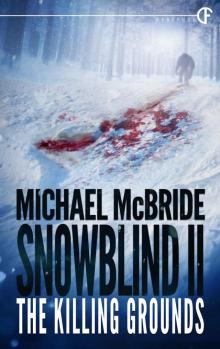 Snowblind II: The Killing Grounds
Snowblind II: The Killing Grounds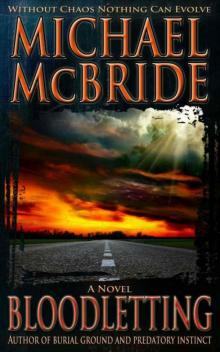 Bloodletting
Bloodletting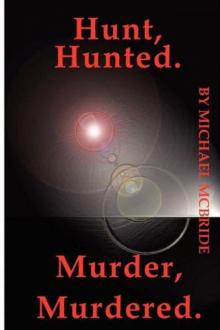 Hunt Hunted, Murder Murdered
Hunt Hunted, Murder Murdered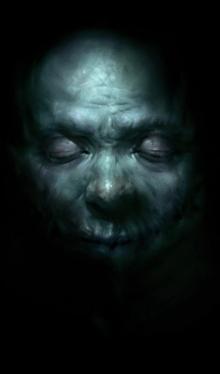 The Bloodspawn
The Bloodspawn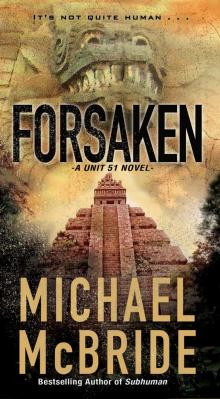 Forsaken
Forsaken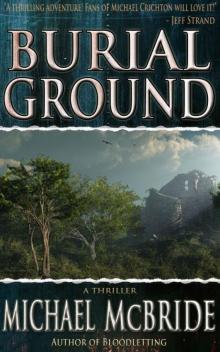 Burial Ground
Burial Ground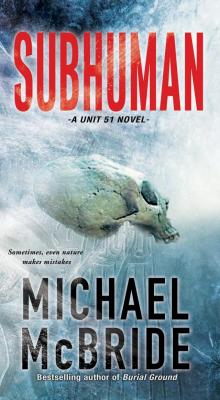 Subhuman
Subhuman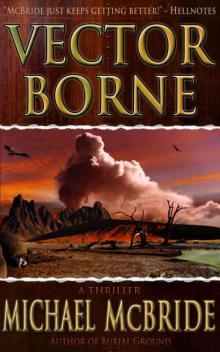 Vector Borne
Vector Borne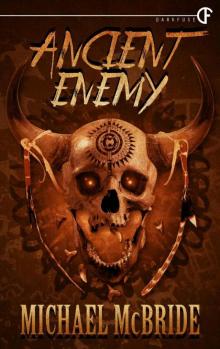 Ancient Enemy
Ancient Enemy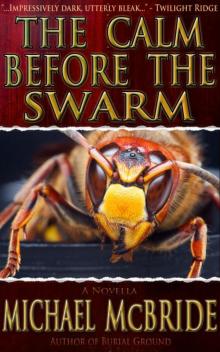 The Calm Before The Swarm
The Calm Before The Swarm Innocents Lost
Innocents Lost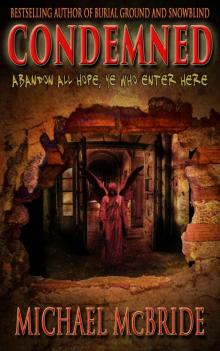 Condemned: A Thriller
Condemned: A Thriller